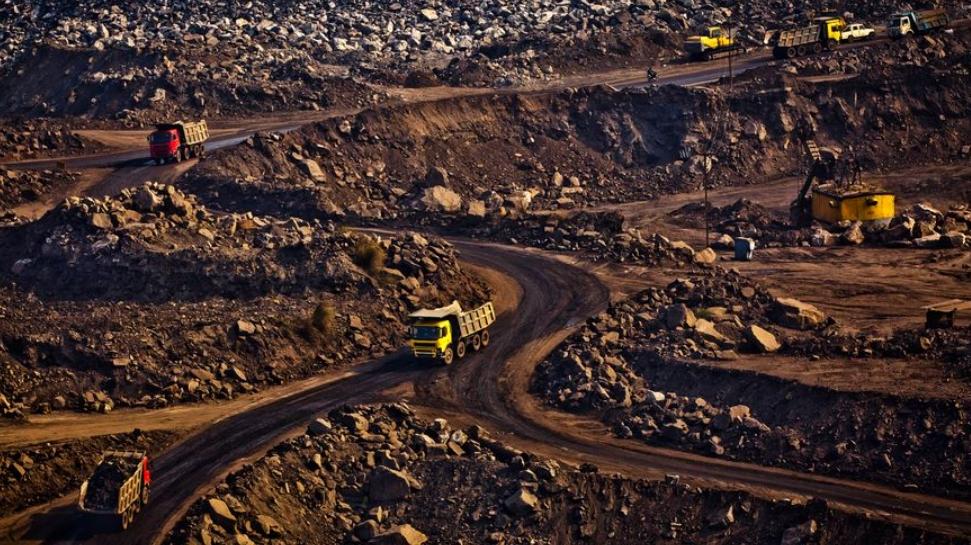Australia’s Mining: Exploration Spending Increases Significantly
Exploration spending in Australia’s mining industry is increasing significantly. Companies invest more in new and existing projects. The country is becoming one of the most important players in the global commodities sector – but sees itself exposed to growing competition and wants to remain at the top through innovation.
The Australian Bureau of Statistics (ABS) released statistics this week showing corporate spending on exploration projects increased significantly in the June quarter. The agency said exploration spending in Australia increased by 23.18%, or A$198.3 million, to A$1,053.6 million.
A look at the composition is also interesting. In particular, record spending of A$673.1 million in Western Australia contributed to the increase.
Higher exploration expenditures affect brownfield and greenfield
Companies invest both in the expansion of existing deposits and in the further exploration of new areas. A look at the details confirms this. Accordingly, exploration expenditures in the greenfield area increased by 20.21% or A$52.6 million to A$312.9 million. In the area of existing deposits, there was an increase of 24.49% to AUD 740.7 million.
Association of Mining and Exploration Companies (AMEC) CEO Warren Pearce stressed that Australia’s mining sector has weathered the pandemic period well. The industry was certainly confronted with challenges during the pandemic. Travel bans and other measures have led to a significant shortage of staff.
Australia is urgently needed as a raw material location. Gold, iron ore, base metals, coal, lithium: The demand for raw materials meets a tight supply worldwide.
A look at exploration spending over the past few years shows that companies have been investing more every year since 2016 than in the previous year.
3117.6km drill programs
increased exploration spending translates into more meters drilled. Here there was an increase of 17.4% or 462.8 km to a total of 3117.6 km. Reported meters drilled into existing deposits increased by 20.9% or 380.9 km to 2205.5 km.
In new deposits, 9.9% or 81.9 km more was drilled for a total of 912.1 km. As with exploration spending, this shows an upward trend that has existed since 2016. This is more pronounced for existing deposits, but can also be seen for new deposits.
Iron Ore saw the largest increase in exploration spending at 44%. AUD 201 million was invested. Companies invested 24% more in exploration for nickel and cobalt projects for a total of A$80.2 million. Geographically, Western Australia accounted for the largest increase in exploration spending at 28%.
The industry association Minerals Council of Australia (MCA) does not want to rely on the favorable situation on the raw materials market and calls for public investment in research and development. MCA chief executive Tania Constavble said Australia must maintain its geoscientific technological lead.
MCA urges preservation of competitiveness
She called for more national programmes, such as Geoscience Australia’s Exploring for the Future programme, and urged the government to ensure a competitive framework in terms of regulation, taxation etc. Finally, according to the MCA Chair, Australia competes with up-and-coming mining regions around the world, which are often very low-cost.
In Australia there are big mining groups like BHP (WKN: 850524, ISIN: AU000000BHP4) and Rio Tinto (WKN: 852147, ISIN: GB0007188757). In addition, various smaller producers, developers and exploration companies are based in the country. The explorers are opening up new areas and, in the current market environment, are trying to start production or expand it as quickly as possible.
A good example of this is the young gold producer and explorer Kaiser Reef Resources (ASX: KAU, WKN: A2P4AV, ISIN: AU0000072506), which we will take a closer look at in the near future.
Kaiser Reef short portrait
Perth-based Kaiser Reef Limited, which has been listed on the ASX since 2020, focuses on gold projects in the Lachlan Ford Belt, an important Australian gold mining district between Victoria and New South Wales in the south-east of the continent. The company is considered Australia’s “highest grade” gold producer.
The mining company is both a producer and an explorer with only 100% owned assets in its portfolio. It owns the producing underground mine “A1”, discovered in 1861, not far from the city of Jamieson in the state of Victoria. Kaiser Reef acquired the mine in 2021 and started production from new quarries that same year. The known mineralization remains open at depth and continues to offer exceptional exploration opportunities. The company also owns a processing plant in Maldon, which processes the ore from “A1”. Through the gold production, Kaiser Reef benefits from a solid revenue stream and is not solely dependent on capital raising activities – a significant competitive advantage over the majority of junior competitors.
Not far from the mine, in the center of the so-called Bendigo-Ballarat Zone of the Lachlan Fold Belt, is the “Maldon Goldfield” project. “Maldon” is one of the largest historical hard gold mines in Victoria (historical production: more than 1.7 million ounces of gold). Kaiser Reef is actively exploring this project with the prospect of bringing it back into production. Maldon Goldfield has only been minimally explored before using modern methods. It offers high discovery potential and benefits such as excellent infrastructure with a modern adit, identified drill targets, proximity to processing plant and existing mining permits. Meanwhile, Kaiser Reef has completed its own exploration drilling. A current mineral resource estimate is 1.2 million tonnes grading 4.4 grams per tonne gold (186,656 ounces). This does not include the section of the historic Nuggety Reef mine (once one of Australia’s highest grade gold mines).
Kaiser Reef’s focus is currently on the projects in Victoria: The main focus is on the operation of the “A1” mine, the production rate of which is to be ramped up. Ongoing exploration work is targeting new discoveries around “A1” to expand resource and reserves and thereby mine life. Diamond drilling had already unearthed numerous high-grade results, some in bonanza dimensions, and identified new veins in newly developed areas of the mine.
In addition to the properties in Victoria, Kaiser Reef has additional gold exploration opportunities in neighboring New South Wales. The Stuart Town project in the Lachlan Fold Belt is located in an area that has had significant historic production (over 170,000 ounces) from numerous small wells.


